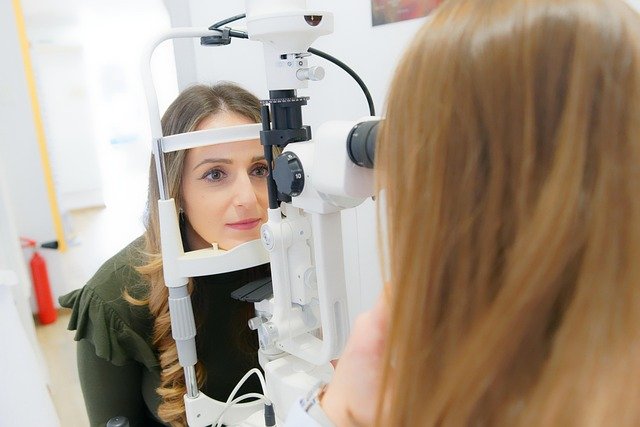Early Indicators and Warning Signs of Acute HIV Infection 2025 United States: A Guide for Prompt Testing and Treatment
Acute HIV infection often begins with flu-like symptoms easily mistaken for common illnesses. Recognizing these signs within weeks after exposure enables timely testing and treatment. This guide summarizes key early symptoms, diagnostic approaches, and the importance of prompt care across the United States.

Understanding Acute HIV Infection: The Critical Initial Phase
Acute HIV infection refers to the first stage occurring about 2 to 4 weeks after HIV enters the body. During this period, the virus replicates rapidly and spreads throughout the immune system, resulting in a high viral load circulating in the bloodstream. This leads to early symptoms and notably increases the likelihood of transmitting HIV to others.
Although symptoms typically develop between 2 and 4 weeks after exposure, onset can occur as soon as 5 days or be delayed up to 3 months, particularly among individuals using preventive measures like pre-exposure prophylaxis (PrEP) or post-exposure prophylaxis (PEP).
Common Early Signs: Flu-Like Symptoms with Specific Features
About two-thirds of people with acute HIV infection experience symptoms resembling the flu, such as:
- Fever
- Headache
- Fatigue
- Muscle aches
- Sore throat
These nonspecific manifestations reflect the body’s immune response to rapid viral replication and immune system attack.
Additional Specific Warning Indicators to Notice
Beyond general flu-like symptoms, certain more distinct signs may suggest acute HIV infection, including:
- Characteristic maculopapular rash (a combination of flat and raised skin lesions)
- Oral ulcers, especially in the mouth and throat region
- Oropharyngeal candidiasis (fungal infection inside the mouth)
- Swollen lymph nodes (lymphadenopathy)
- Meningismus (stiff neck or symptoms similar to meningitis)
- Unexplained weight loss
In particular, oral ulcers and weight loss have been recognized as highly specific to acute HIV infection.
The Importance of Early Detection: High Viral Load and Risk of Transmission
During acute infection, HIV viral levels in the blood are exceptionally high. This elevated viremia makes individuals far more infectious than in later stages. Identifying and diagnosing infection at this point enables initiation of antiretroviral therapy (ART), which can rapidly reduce viral load, preserve immune function, and lower transmission risk.
Starting ART early also correlates with enhanced long-term health outcomes, such as better maintenance of immune cells and a decreased viral reservoir—a critical factor in ongoing HIV cure research.
Diagnostic Approaches in Acute HIV: Beyond Standard Antibody Testing
Standard HIV antibody tests may fail to detect infection during the acute phase because antibodies have not yet reached detectable levels. Thus, current 2025 guidelines emphasize:
- HIV RNA testing (Nucleic Acid Testing - NAT): Detects the virus itself and can identify infection days to weeks before antibodies become detectable.
- Fourth-generation antigen/antibody combination immunoassays: These detect both HIV antibodies and the p24 antigen, which appears earlier than antibodies.
If initial antibody tests yield negative or indeterminate results, reflex HIV RNA testing is recommended to confirm the diagnosis.
Diagnostic Challenges Among PrEP and PEP Users
Individuals on PrEP or PEP might have delayed or atypical symptom presentation. In these situations, early viral loads can be suppressed, complicating diagnosis. Careful monitoring through repeated testing and consultation with HIV specialists is necessary to avoid missed or delayed diagnosis in these populations.
Clinical Context: When to Suspect Acute HIV Infection
Because symptoms overlap with other common illnesses like influenza or mononucleosis, acute HIV infection can be easily missed. Healthcare providers should maintain a high level of suspicion in adults presenting with febrile, flu-like illnesses who also report recent sexual or blood exposure risks, even if specific exposures are unclear.
Prompt diagnosis is especially crucial during pregnancy to minimize mother-to-child transmission by enabling early initiation of treatment.
Advantages of Starting Antiretroviral Therapy Promptly
Immediate initiation of ART following an acute HIV diagnosis:
- Helps preserve immune system function, particularly CD4 cells
- Shortens time to achieve viral suppression
- Reduces size and diversity of the viral reservoir
- Decreases the risk of transmitting HIV to others
- Supports overall improved health outcomes
These findings are consistent with the latest U.S. clinical guidelines updated for 2024–2025.
The Vital Role of Experienced HIV Care Providers in Management
Due to the complexity involved in diagnosing and managing acute HIV infection—especially with PrEP/PEP use and unusual presentations—it is advisable for patients to receive care from clinicians specialized in HIV. Such experts are better prepared to interpret diagnostic tests, tailor ART regimens, provide counseling on transmission prevention, and facilitate shared decision-making based on individual needs.
In Summary: Identify, Test, and Treat Without Delay
Acute HIV infection manifests through common yet critical warning signs soon after exposure. Awareness of these early symptoms, utilization of advanced diagnostic testing, and collaboration with experienced healthcare providers ensure prompt treatment. This strategy not only enhances individual health but also plays a key role in reducing HIV transmission throughout the United States in 2025.
Sources
- Centers for Disease Control and Prevention (CDC). About HIV and AIDS: Acute and Chronic HIV. https://hiv.gov/hiv-basics/overview/about-hiv-and-aids/acute-and-chronic-hiv
- National Institute of Allergy and Infectious Diseases (NIAID). Stages of HIV Infection. https://hivinfo.nih.gov/understanding-hiv/fact-sheets/stages-hiv-infection
- New York State Department of Health AIDS Institute. Diagnosis and Management of Acute HIV Infection. https://www.hivguidelines.org/guideline/hiv-acute/
Disclaimer: This article provides general educational information about early symptoms, testing, and treatment of acute HIV infection. For personal medical advice, diagnosis, or treatment, always consult a qualified healthcare professional. Information regarding diagnostic tests and treatment options may vary by region and evolve over time.




